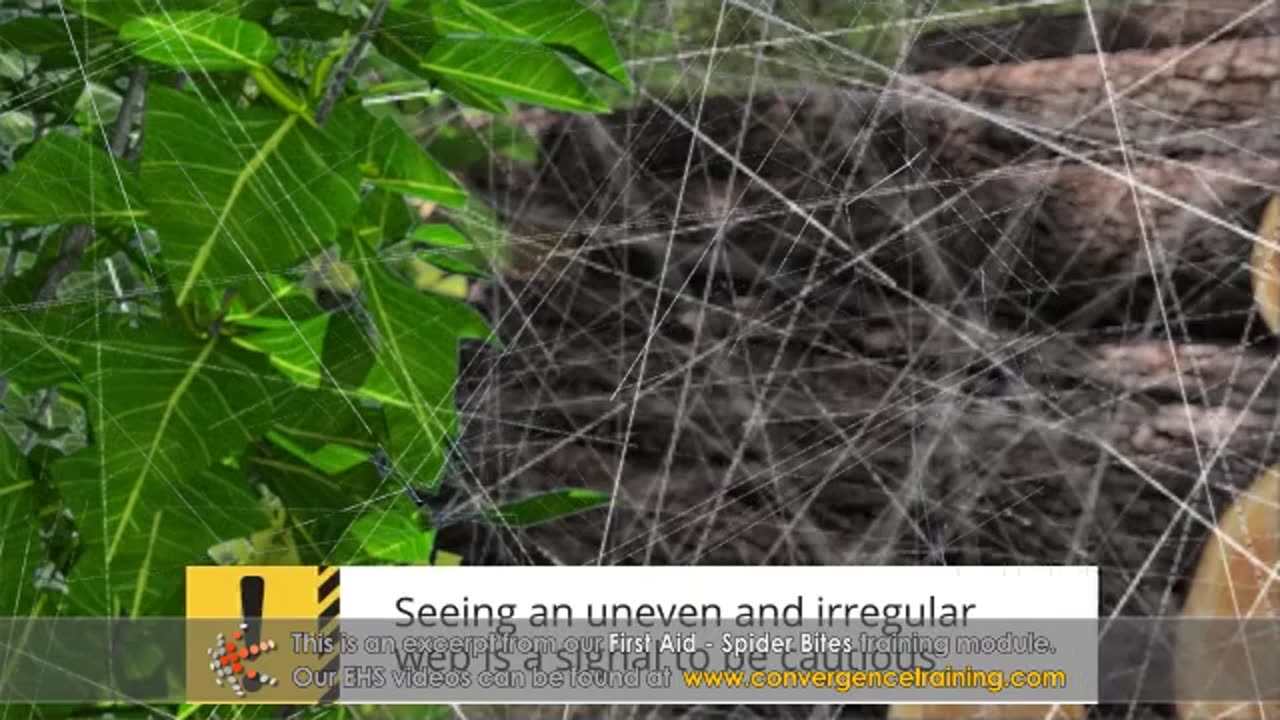Premium Only Content

First Aid - Spider Bites Training
### **First Aid Training for Spider Bites**
This training provides participants with the knowledge to recognize different types of spider bites, understand symptoms, and administer first aid, including when to seek professional medical help.
---
### **1. Introduction to Spider Bites**
- **Why This Training is Important**
- While most spider bites are harmless, some can cause significant reactions and require medical attention.
- Understanding common spiders and their bite characteristics can save lives.
- **Types of Spiders**
- **Non-Venomous Spiders**: Most common household spiders (e.g., common house spider).
- **Venomous Spiders**:
- **Black Widow Spider**: Known for its venomous bite causing muscle pain and cramping.
- **Brown Recluse Spider**: Causes necrosis and severe skin reactions.
- Other potentially dangerous spiders in certain regions.
---
### **2. Identifying Spider Bites**
- **Common Symptoms**
- **Mild Symptoms**: Local pain, swelling, and redness at the bite site.
- **More Serious Symptoms**: Increased pain, spreading redness, fever, chills, or nausea.
- **Black Widow Bite**: Muscle cramps, sweating, nausea, headache, and abdominal pain.
- **Brown Recluse Bite**: A necrotic wound, with the skin turning blue or purple around the bite site.
- **When to be Concerned**
- Large, growing wounds.
- Severe pain, cramping, or vomiting.
- Difficulty breathing or dizziness (possible anaphylaxis or systemic reaction).
---
### **3. Immediate First Aid for Spider Bites**
- **For Most Bites (Non-Venomous or Mild Symptoms)**:
1. **Clean the Bite Area**: Wash with soap and water to prevent infection.
2. **Apply a Cold Compress**: Use ice or a cloth-wrapped cold pack to reduce swelling and pain.
3. **Elevate the Affected Limb**: If possible, elevate to reduce swelling.
4. **Pain Relief**: Use over-the-counter pain relievers (e.g., acetaminophen or ibuprofen).
5. **Monitor Symptoms**: Watch for signs of worsening or infection (pus, increased pain).
- **For Venomous Spider Bites (Black Widow or Brown Recluse)**:
1. **Call Emergency Services (911)** if severe symptoms or systemic reactions occur.
2. **Keep the Person Calm and Still**: This helps prevent venom from spreading faster.
3. **Apply Ice**: To the bite area to reduce swelling and pain.
4. **Avoid Applying Pressure or Cutting the Wound**: These may cause further harm.
5. **Transport to a Medical Facility**: If safe, go to the hospital immediately for more advanced treatment.
---
### **4. Medical Treatment**
- **When to Seek Professional Medical Attention**
- **Black Widow Spider Bite**: Hospital treatment may be needed for muscle pain and venom effects. Antivenom may be required in severe cases.
- **Brown Recluse Spider Bite**: Medical intervention is necessary for necrotic tissue. The wound may need surgical debridement or antibiotics.
- **Antivenom**: Available for black widow spider bites in some cases.
- **Wound Care**: For necrotic wounds (brown recluse), healthcare providers will manage infection and tissue death.
---
### **5. Preventing Spider Bites**
- **At Home**
- Seal cracks and crevices in walls and windows.
- Keep your home clean and free of clutter where spiders might hide.
- Regularly check and shake out clothing, shoes, and blankets before use.
- **In the Outdoors**
- Wear gloves, long sleeves, and pants when handling wood, rocks, or working in areas with potential spider habitats.
- Avoid reaching into dark, hidden areas such as basements, attics, or crawl spaces without checking first.
- **Avoiding Spider Nests**
- Be cautious around areas where spiders build webs (e.g., in sheds, garages, or outdoor storage).
---
### **6. Special Considerations**
- **Children and Elderly**
- More likely to experience severe reactions to spider bites.
- Ensure that children and the elderly receive prompt medical attention if bitten, even if symptoms are mild.
- **Allergic Reactions**
- Some individuals may have allergic reactions to spider venom, requiring epinephrine or antihistamines.
---
### **7. Hands-On Activities**
- **Simulated Spider Bite Response**
- Practice applying first aid (cleaning the bite site, applying ice, elevating limbs).
- Identifying symptoms and determining when emergency care is necessary.
- **Identifying Spider Species**
- Using visual aids or spider identification guides to recognize dangerous species in the workplace or home.
- **Role-Playing Emergency Scenarios**
- Practice responding to an actual bite scenario, including calling emergency services and managing symptoms.
---
### **8. Conclusion**
- **Key Takeaways**
- Most spider bites are harmless, but knowing the symptoms of venomous bites is crucial.
- Swift, calm action can minimize the effects of a bite and save lives.
- Prevention and early response are key to reducing the impact of spider bites.
- **Resources**
- Company policies on pest control and first aid procedures.
- Local spider species and their bite characteristics.
- **Q&A Session**
---
### Supporting Materials
Would you like:
- A **training manual** or **presentation slides**?
- **Spider bite first aid checklists**?
- **Visual identification guides** for venomous spiders?
- Custom **quizzes or certifications** for participants?
Let me know how I can assist further!
-
 1:04:52
1:04:52
Geeks + Gamers
2 hours agoDisney RATIO'D on Christmas Day | Mufasa Embarrassed By Sonic 3
13.8K1 -
 LIVE
LIVE
Sm0k3m
6 hours agoPlaying games on Rumble
246 watching -
 10:37
10:37
Russell Brand
2 days agoHow is this even allowed?
113K692 -
 1:37:26
1:37:26
Real Coffee With Scott Adams
2 hours agoEpisode 2701 CWSA 12/26/24
40.2K21 -
 2:58:58
2:58:58
Wendy Bell Radio
7 hours ago9 Steps Ahead
80K105 -
 LIVE
LIVE
LFA TV
16 hours agoTIME FOR A NEW SPEAKER! | LIVE FROM AMERICA 12.26.24 11am EST
5,296 watching -
 1:40:22
1:40:22
Game On!
13 hours ago $4.43 earnedNFL Thursday Night Football Seahawks at Bears EXPERT Picks!
33.3K9 -
 1:50:54
1:50:54
xBuRnTx
2 hours agoWho's Ready for New Years!
23.5K1 -
 12:09
12:09
Tactical Advisor
15 hours agoSmith & Wesson Shield Plus Carry Comp
19.3K1 -
 4:35:25
4:35:25
Father Russell
8 hours agoDelta Force | Not A Woman? | Mad Martigan Time
60.9K5